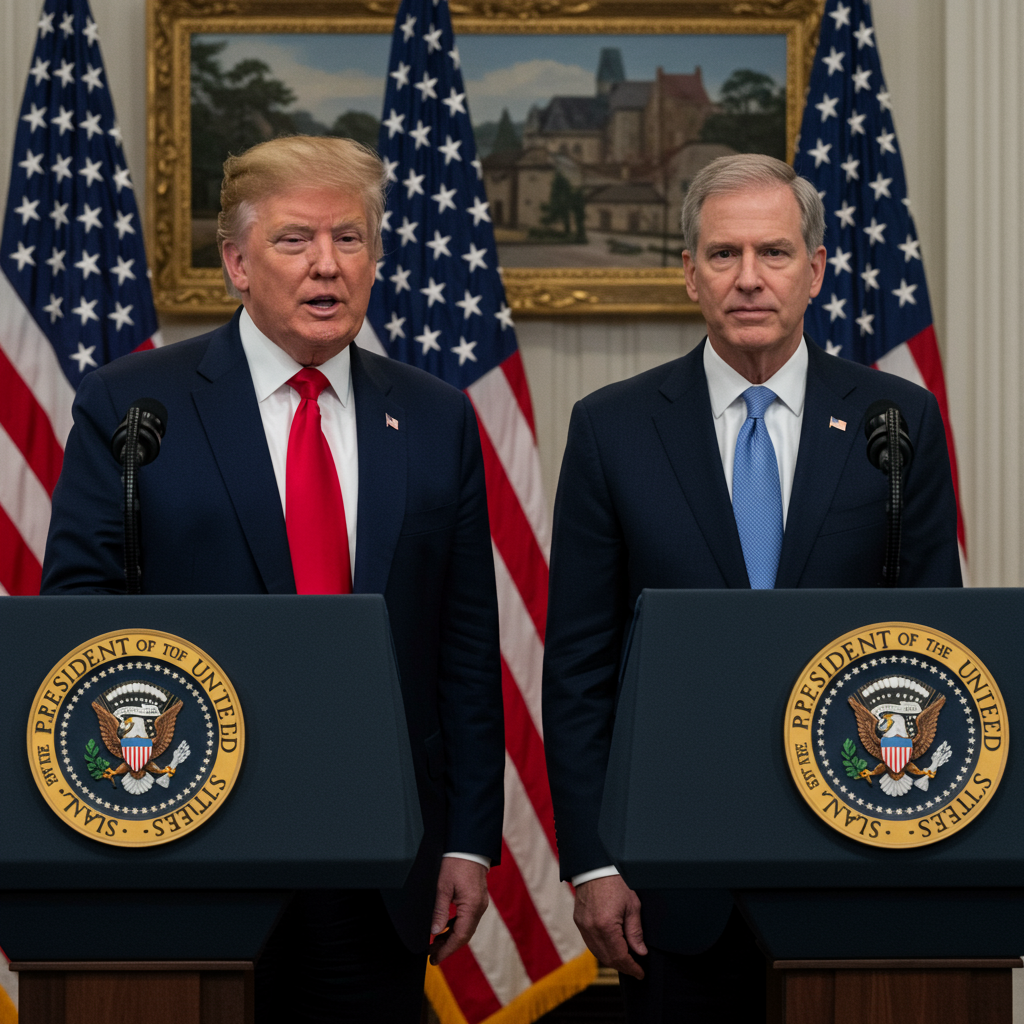Congressional republicans recently pushed through a sweeping legislative package, dubbed the “One Big Beautiful Bill Act” by former President Donald Trump. This massive proposal has sparked intense debate and concerns among political analysts. Far from a minor adjustment, the bill represents a significant shift in approach, combining deep spending reductions with substantial tax cuts. Critics argue its potential consequences are alarmingly reckless, posing major risks to millions of Americans and the nation’s fiscal health. The legislation’s hasty passage adds another layer to the controversy, raising questions about its true impact and political motivations.
Unprecedented Financial Strategy Ignites Debate
Historically, when congressional Republicans have enacted large tax cuts, they’ve primarily relied on increased government borrowing to offset the costs. This approach postpones the financial reckoning, minimizing immediate political fallout from program reductions. The strategy has allowed lawmakers to deliver tax benefits without directly confronting voters with painful spending cuts that affect large segments of the population.
However, the sheer scale of the “One Big Beautiful Bill Act” demanded a different method. Analysts estimate the bill adds approximately $3 trillion to the national debt. With existing budget deficits already substantial, Republicans found they couldn’t place the entire cost solely on credit.
The Shift to Deep Spending Cuts
This new reliance on budget cuts marks a significant departure. To finance a portion of the massive tax reductions, the bill targets various government programs for substantial spending reductions. This strategic pivot exposes Republicans to a level of direct political opposition they have largely avoided in the past. Unlike the abstract concept of increased national debt, specific cuts to social safety nets and essential services have tangible, immediate impacts on voters’ lives.
Millions Face Direct Harm from Bill’s Provisions
The core elements of the bill involve a regressive restructuring of the tax code paired with significant cuts to government benefits. This combination violates deeply held public beliefs about fairness and government responsibility. Polling data suggests the package is highly unpopular, registering significantly “underwater” with the public. The abstract unpopularity is expected to intensify dramatically once the bill’s effects are felt across the country.
President Trump initially attempted to downplay the impact of the cuts, claiming $1.7 trillion in reductions wouldn’t be noticed, suggesting they would only target waste or ineligible recipients. This assertion, however, stands in stark contrast to the bill’s actual mechanisms and anticipated outcomes.
Specific Impacts on Healthcare and Food Assistance
The legislation is projected to have devastating consequences for vulnerable populations. It’s estimated that roughly 3 million Americans will lose access to food assistance programs. Even more dramatically, the bill is expected to cause approximately 12 million people to lose their health insurance coverage.
A primary driver of this loss is changes to Medicaid. The bill includes requirements for recipients to provide proof of employment. Experience from states that have experimented with similar measures shows that the resulting bureaucratic hurdles are incredibly difficult to navigate. Millions of individuals who remain eligible for Medicaid are likely to lose coverage simply because they cannot manage the complex and time-consuming paperwork. This creates an “infuriating time tax” on low-income Americans struggling to maintain basic medical care access. The intent appears less about eligibility enforcement and more about creating administrative barriers to participation.
Rising energy Costs Threaten Households
Beyond social programs, the “One Big Beautiful Bill Act” also targets the clean energy sector. Provisions within the bill eliminate tax credits and subsidies for renewable energy sources like wind and solar. This move comes at a critical time, as renewables account for the vast majority of new energy capacity built in the United States, and overall electricity demand is on the rise.
Removing these incentives is expected to lead to higher household energy bills. The impact will be particularly severe in states with significant investment in wind and solar power. Residents in states such as Texas, Oklahoma, Kansas, Missouri, Kentucky, and South Carolina may see the most substantial increases in their energy expenses. While one controversial tax provision on wind and solar was later removed, the broader elimination of credits still poses a threat to energy cost stability and the transition to cleaner energy.
Potential for National Debt Crisis Looms
Perhaps the most significant, albeit less certain, risk associated with the bill is the potential to trigger a national debt crisis. Adding $3 trillion to an already large national debt could have cascading negative effects. Large increases in government borrowing can push up interest rates across the economy.
Higher interest rates force the government to spend more money simply paying interest on its existing debt. This increased interest payment requirement necessitates further borrowing, which can, in turn, put even more upward pressure on interest rates. This self-reinforcing cycle could create a potentially disastrous fiscal spiral, dwarfing the direct harms caused by the spending cuts.
Why Did Republicans Proceed? Exploring the Motivations
Given the widespread potential harm, projected unpopularity, and significant economic risks, the decision by the Republican majority to pass this bill raises fundamental questions about their motivations. Several interlocking factors likely contributed to their willingness to move forward despite the apparent dangers.
One explanation is simply a lack of full awareness regarding the bill’s true consequences and public sentiment. Many politicians rely heavily on partisan media outlets, which have largely celebrated the bill while downplaying its downsides. The rapid legislative process employed to push the bill through minimized public scrutiny and limited lawmakers’ exposure to detailed concerns from constituents, experts, and non-partisan analysts. Even the White House appeared surprisingly uninformed about specific provisions at times.
A second possibility is ideological conviction. Some Republicans genuinely believe in reducing government spending and shrinking the social safety net, along with lowering taxes, particularly for corporations and wealthy individuals. For these members, the political risk may be deemed acceptable in pursuit of long-held policy goals, viewing the dismantling of programs like Medicaid expansion as a victory.
Trump’s Influence as a Driving Force
A powerful driver was undoubtedly the political momentum generated by President Trump’s insistence on a “big and beautiful” bill. While flexible on specific details, Trump demanded a sweeping package, branding it as his signature achievement. This created immense pressure on congressional Republicans. Trump’s team cleverly used his personal branding, referring to it as the “One Big Beautiful Bill,” to overshadow the controversial contents.
Internal dissent was reportedly met with ruthless pressure from the White House. Reports indicate threats of losing subsidies (as in the case of Elon Musk, a critic of the energy provisions) or facing primary challenges (as seen with Senator Thom Tillis, who criticized Medicaid cuts before ultimately voting for the bill and announcing he would not seek re-election). This coercive environment made outright opposition appear politically suicidal for many members. The mantra “Failure is not an option” reportedly became common, seemingly designed to prevent lawmakers from even considering the possibility that passing the bill might be worse than stopping it.
Finally, some Republicans may have grown desensitized to warnings of impending catastrophe associated with Trump-era policies. For years, critics have predicted severe negative outcomes from various actions, and while many policies have had significant impacts, widespread public revolt or total economic collapse hasn’t always materialized exactly as predicted. This could have led some lawmakers to discount the warnings about this bill, viewing them as exaggerated or standard opposition rhetoric.
This Bill Is Different: The Political Reckoning
Despite potential desensitization, analysts warn that the “One Big Beautiful Bill Act” carries unique political risks compared to previous Trump actions. Executive actions, while impactful, can sometimes be quietly rolled back or modified by subsequent administrations or through regulatory changes. Legislation, however, is far more permanent. Once signed into law, its effects are locked in unless Congress passes new legislation to repeal or alter it.
Crucially, unlike executive orders, every member of Congress who voted for the bill will have a clear, recorded vote tied to its passage. The negative consequences – whether loss of healthcare, increased energy bills, or even a future debt crisis – will be directly linked to their legislative action. An angry public will likely place the blame not solely on the President, but squarely on the shoulders of the Republican lawmakers who authored and approved the bill. This shared accountability means the potential political ignominy could be widely distributed, potentially jeopardizing the electoral future of those who supported it.
Frequently Asked Questions
What is the “One Big Beautiful Bill Act”?
The “One Big Beautiful Bill Act” is a major legislative package passed by congressional Republicans under former President Trump. It combines significant tax cuts, particularly benefiting wealthy individuals and corporations, with substantial reductions in government spending. It’s designed to partially offset the cost of the tax cuts through budget reductions, a departure from historical Republican reliance solely on increasing the national debt for financing tax cuts.
How does the bill impact healthcare and energy costs?
The bill is projected to cause millions of Americans to lose health insurance, primarily through cuts to Medicaid, partly due to onerous work requirements that create bureaucratic barriers. It also eliminates tax credits and subsidies for renewable energy, expected to raise household energy costs, particularly in states with high reliance on wind and solar power like Texas, Oklahoma, Kansas, and Missouri.
Why is this bill considered politically risky for Republicans?
Analysts view the bill as politically risky because its core elements – regressive tax cuts paired with cuts to popular programs like Medicaid – are deeply unpopular with the public. Unlike financing through debt, the spending cuts will cause direct, tangible harm to millions, likely provoking significant backlash. Furthermore, the bill’s legislative nature means all members who voted for it are permanently tied to its consequences, making them direct targets for public anger over job losses, healthcare access issues, or energy price increases.



